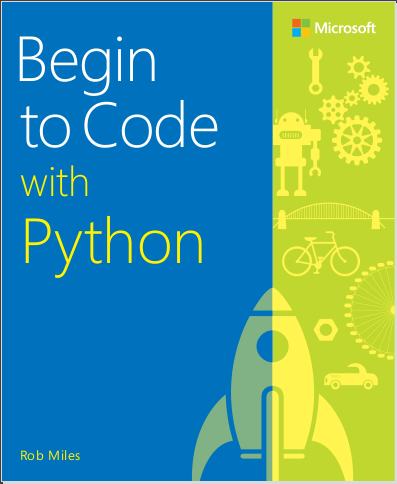
Introduction
Programming is the most creative thing you can learn how to do. Why? If you learn to paint, you can create pictures. If you learn to play the violin, you can make music. But if you learn to program, you can create entirely new experiences (and you can make pictures and music too, if you wish). Once you’ve started on the programming path, there’s no limit to where you can go. There are always new devices, technologies, and marketplaces where you can use your programming skills.
Think of this book as your first step on a journey to programming enlightenment. The best journeys are undertaken with a destination in mind, and the destination of this journey is “usefulness.” By the end of this book, you will have the skills and knowledge to write useful programs.
However, before we begin, a small word of warning. Just as a guide would want to tell you about the lions, tigers, and crocodiles that you might encounter on a safari, I must tell you that our journey might not be all smooth going. Programmers must learn to think slightly differently about problem solving, because a computer just doesn’t work the same way humans do. Humans can do complex things rather slowly. Computers can do simple things very quickly. It is the programmer’s job to harness the simple abilities of the machine to solve complicated problems. This is what you’ll learn to do. The key to success as a programmer is much the same as for many other endeavors. To become a world-renowned violin player, you will have to practice a lot. The same is true for programming. You must spend a lot of time working on your programs to acquire code-writing skills. However, the good news is that just as a violin player really enjoys making the instrument sing, making a computer do exactly what you want turns out to be a very rewarding experience. It gets even more enjoyable when you see other people using programs that you’ve written and finding them useful and fun to use.
Contents list:
- Part 1: Programming fundamentals
- Chapter 1 Starting with Python . . . . . . . . . . . . . . . . . . . . . . . . . . . . . . . . .
- Chapter 2 Python and Programming . . . . . . . . . . . . . . . . . . . . . . . . . .
- Chapter 3 Python program structure . . . . . . . . . . . . . . . . . . . . . . . . . .
- Chapter 4 Working with variables . . . . . . . . . . . . . . . . . . . . . . . . . . . . .
- Chapter 5 Making decisions in programs . . . . . . . . . . . . . . . . . . . . . .
- Chapter 6 Repeating actions with loops . . . . . . . . . . . . . . . . . . . . . . .
- Chapter 7 Using functions to simplify programs . . . . . . . . . . . . . . .
- Chapter 8 Storing collections of data . . . . . . . . . . . . . . . . . . . . . . . . .
- Part 2: Advanced programming
- Chapter 9 Use classes to store data . . . . . . . . . . . . . . . . . . . . . . . . . . .
- Chapter 10 Use classes to create active objects . . . . . . . . . . . . . . . . .
- Chapter 11 Object-based solution design . . . . . . . . . . . . . . . . . . . . . .
- Chapter 12 Python applications . . . . . . . . . . . . . . . . . . . . . . . . . . . . . . .
- Part 3: Useful Python (Digital-only)
- Chapter 13 Python and Graphical User Interfaces . . . . . . . . . . . . . . .
- Chapter 14 Python programs as network clients . . . . . . . . . . . . . . . .
- Chapter 15 Python programs as network servers . . . . . . . . . . . . . . . .
- Chapter 16 Create games with Pygame . . . . . . . . . . . . . . . . . . . . . . . .
Happy learning!